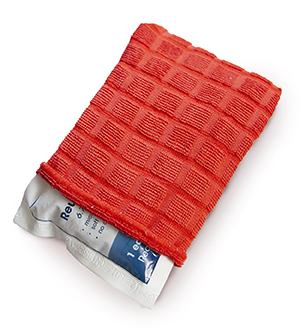Perineum Care After Childbirth
The perineum is the area of tissue between the vagina and anus. After childbirth, this area may be very sore. It stretches a lot during a vaginal birth. Tissue in the area may tear. Or it may have been cut during childbirth (episiotomy). The area may ache or have sharp pains. It may be swollen. You may have bleeding. It may be hard for you to sit or go to the bathroom. Pain and swelling can last for 7 to 10 days after childbirth. This sheet will help you take care of your discomfort.
How to say it
payr-uh-NEE-uhm
Managing pain

These can help ease your pain:
-
Pain medicine. Ibuprofen or acetaminophen can help lessen pain. Ask your healthcare provider what dose is safe if you are breastfeeding.
-
Cool pack. Put an ice pack or cool pack on your perineum. Protect your skin with a thin towel. Keep the cool pack in place for 10 to 20 minutes at a time. You can do this several times a day, as needed.
-
Cool sitz baths. This means sitting in a shallow tub of cool water for 20 to 30 minutes. Make sure your sore areas are fully in the water. You can do this several times as day as needed. Have a sitz bath after every bowel movement.
-
Medicated spray. You can use a pain-relief spray on the area as advised by your healthcare provider.
Tell your healthcare provider if you can’t urinate because of pain. You may need a catheter while your perineum heals. A thin, flexible tube (catheter) will be put into your urethra. Your urine will collect in a bag.
Until you feel better:
If you had an episiotomy or tear
An episiotomy is a cut (incision) made to make the opening of the vagina larger. Or the tissue may tear on its own. Stitches are used to repair the skin in the perineum. The stitches will dissolve on their own in a few weeks. They don’t need to be removed by your healthcare provider. You need to lower the risk of infection by keeping your stitches clean. To do this:
-
Gently wipe from front to back after you have a bowel movement.
-
After wiping, spray warm water on the stitches with a squirt bottle. Pat dry.
-
After urination, it's OK not to wipe. Just spray with warm water and then pat dry.
-
Don’t use soap or any cleaner except water unless your healthcare provider advises it.
-
Change your sanitary pads at least every 2 to 4 hours.
Preventing constipation
Straining at your stool can make your perineum hurt more. To help prevent constipation:
-
Get enough fiber in your daily diet. Eat fresh fruits and vegetables and whole grains.
-
Drink plenty of fluids every day.
-
Use a stool softener or laxative if needed. Talk with your healthcare provider before taking medicine if you are breastfeeding.
When to call your healthcare provider
Call your healthcare provider if any of these occur:
-
Fever of 100.4°F (38°C) or higher, or as advised by your provider
-
Redness, swelling, or pain that gets worse
-
Pain that is not helped with medicine
-
Fluid leaking from your stitches
-
Stitches that are pulling apart
-
Trouble controlling your urine or stool
-
Other new symptoms
Online Medical Reviewer:
Donna Freeborn PhD CNM FNP
Online Medical Reviewer:
Heather M Trevino BSN RNC
Online Medical Reviewer:
Irina Burd MD PhD
Date Last Reviewed:
12/1/2022
© 2000-2024 The StayWell Company, LLC. All rights reserved. This information is not intended as a substitute for professional medical care. Always follow your healthcare professional's instructions.